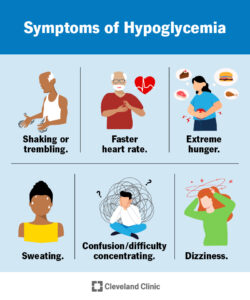A sugar in blood chart provides precise measurements of glucose levels in the bloodstream. In a person without diabetes, blood sugar levels typically range from 70 to 99 milligrams per deciliter (mg/dL) when fasting, and up to 140 mg/dL two hours after a meal.
For individuals with diabetes, a blood sugar chart helps monitor and manage their glucose levels to prevent complications. It acts as a reference guide to keep blood sugar within target ranges and determine appropriate treatment and medication adjustments. A sugar in blood chart is an essential tool for both healthcare professionals and individuals with diabetes to ensure optimal blood sugar control and overall health.

Credit: www.everydayhealth.com
Table of Contents
Healthy Eating Habits For Stable Blood Sugar Levels
When it comes to maintaining stable blood sugar levels, healthy eating habits play a crucial role. One important aspect is choosing carbohydrates wisely. Opt for complex carbohydrates such as whole grains, legumes, and vegetables, as they are digested more slowly, preventing sudden spikes in blood sugar. Additionally, incorporating fiber-rich foods into your diet is essential. Fiber helps slow down the absorption of sugars, promoting better blood sugar control. Make sure to include fruits, vegetables, and whole grains in your meals to increase your fiber intake. Portion control is another factor to consider. Eating balanced meals in appropriate portions helps prevent overeating, thereby reducing the risk of blood sugar imbalances. By following these guidelines, you can achieve stable blood sugar levels and promote overall health.
Regular Physical Activity For Blood Sugar Management
Sugar in Blood Chart is an essential tool for managing blood sugar levels. Regular physical activity plays a crucial role in regulating blood sugar levels and preventing complications associated with diabetes. Engaging in different types of exercise can help optimize the results.
Aerobic exercises like walking, jogging, swimming, or cycling can lower blood sugar levels by increasing insulin sensitivity. Resistance training exercises such as weightlifting can also improve blood sugar control.
It’s important to incorporate physical activity into your daily routine. Consider taking the stairs instead of the elevator, parking farther away from your destination, or going for a walk during lunch breaks. Setting achievable goals and gradually increasing exercise intensity can make fitness a sustainable habit.
Remember to consult with your healthcare provider before starting any exercise regimen, especially if you have any pre-existing medical conditions.
Medications And Diabetes Management
Medications play a crucial role in managing diabetes and maintaining healthy blood sugar levels. Having a sugar in blood chart helps monitor and adjust medication dosage to ensure effective diabetes management.
Understanding Different Types Of Diabetes Medications
There are several types of diabetes medications that can help manage blood sugar levels. These include oral medications, injectable medications, and insulin. Oral medications are taken by mouth and may work in various ways to lower blood sugar levels. Some common types of oral medications include metformin, sulfonylureas, and DPP-4 inhibitors. Injectable medications, such as GLP-1 receptor agonists and SGLT2 inhibitors, are administered via injection and can help lower blood sugar levels as well. Insulin is a hormone that helps regulate blood sugar, and it can be injected using a syringe, pen, or pump.
How To Take Medications As Prescribed
It is important to take diabetes medications as prescribed by your healthcare provider. Follow the recommended dosage and timing instructions, and ensure you understand how to properly administer the medication. Set reminders if necessary to help you remember to take your medications on time. It is also crucial to communicate with your healthcare provider if you have any concerns or difficulties with medication administration. They can provide guidance and support to ensure you are managing your diabetes effectively.
Recognizing Potential Side Effects And When To Seek Medical Advice
Some diabetes medications may have side effects that you should be aware of. These can vary depending on the specific medication and may include nausea, dizziness, or low blood sugar. It is important to monitor your body and pay attention to any changes or symptoms you may experience. If you notice any severe or persistent side effects, it is crucial to seek medical advice right away. Your healthcare provider can help determine if the side effects are related to your medication and provide appropriate guidance to ensure your well-being.
Stress Management Techniques For Better Blood Sugar Control
Stress management techniques for better blood sugar control
The impact of stress on blood sugar levels:
Taking steps to manage stress can have a positive effect on overall blood sugar control. Stress triggers the release of hormones that can cause blood sugar levels to rise. Practicing relaxation techniques and stress reduction strategies can help reduce stress levels, subsequently aiding in blood sugar management.
- Deep breathing exercises
- Meditation and mindfulness practices
- Yoga or other physical exercises
- Engaging in hobbies and activities that bring joy
- Getting adequate sleep
- Connecting with loved ones and seeking support
Self-care plays a crucial role in managing diabetes and stress levels. It involves adopting healthy lifestyle choices, such as maintaining a balanced diet, keeping physically active, and monitoring blood sugar levels regularly. Prioritizing self-care not only enhances overall well-being but also helps in achieving better blood sugar control.
Frequently Asked Questions Of Sugar In Blood Chart
What Is A Normal Blood Sugar Level?
A normal blood sugar level ranges from 80 to 130 mg/dL (milligrams per deciliter) before meals and less than 180 mg/dL after meals. It may vary depending on age, health condition, and the time of testing. Regular monitoring is essential for maintaining stable blood sugar levels.
How Does High Blood Sugar Affect The Body?
High blood sugar, known as hyperglycemia, can have several negative effects on the body. It can lead to symptoms like excessive thirst, frequent urination, fatigue, blurry vision, and slow wound healing. Long-term complications can include heart disease, nerve damage, kidney problems, and eye issues.
What Are The Causes Of Low Blood Sugar Levels?
Low blood sugar or hypoglycemia can be caused by various factors, such as excessive insulin or diabetes medication, prolonged fasting, skipping meals, strenuous exercise, alcohol consumption, or certain medical conditions. It can lead to symptoms like confusion, dizziness, weakness, sweating, and irritability.
How Can I Maintain Stable Blood Sugar Levels?
To maintain stable blood sugar levels, it is important to follow a balanced diet, regular physical activity, and take medication as prescribed. Monitor carbohydrate intake, avoid sugary foods and drinks, consume high-fiber foods, stay hydrated, get enough sleep, manage stress, and comply with your healthcare provider’s instructions.
Regular monitoring is crucial for managing blood sugar levels effectively.
Conclusion
Based on the sugar in blood chart, monitoring your blood sugar levels is crucial for maintaining a healthy lifestyle. By understanding the fluctuations in your glucose levels, you can make informed decisions about diet, exercise, and medication. Remember that a balanced approach, paired with regular check-ups and professional advice, can help you effectively manage your blood sugar levels.
Take charge of your health and stay on top of your numbers.








